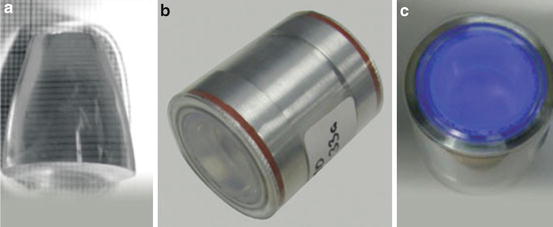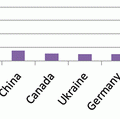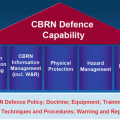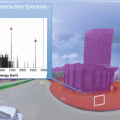GeMini features a detector made from an ultrapure germanium crystal. Many other substances can be used to detect gamma rays, but germanium offers the best resolution. However, germanium achieves its spectacular resolution only when cooled to cryogenic temperatures of about 100 K (−173 °C) or less. GeMini’s design incorporates an innovative ultraminiature cooling system, rugged construction, low power consumption, automated operation, and small size. In fact, the instrument is small enough to fit in the palm of one’s hand.
GeMini’s outstanding energy resolution is particularly important in national security applications, when it is critical to differentiate between legitimate and illicit sources of gamma rays. The portability of GeMini makes it ideally suited for first responders either in search operations or in the case of a natural disaster where a concern of radioactive contamination exists. A version of GeMini is being built for the international safeguards community to use in field inspections of nuclear processing facilities.
22.4 New Sensing Materials
An alternative method for detecting gamma rays is scintillation, in which radiation interacts with a material to produce a brief but measurable flash of light. Although high-purity germanium, a semiconductor, has been the standard for years, it is expensive and hard to scale for large applications such as border crossing detection. These limitations drove the Department of Homeland Security’s request to develop more effective materials to detect gamma rays. In response, Livermore essentially went back to first principles to develop new materials for cheaper, faster, and more accurate sensors.
Our new scintillating materials include single-crystal, plastic, and ceramic materials with improved radioisotope identifiers. These materials offer high-energy resolution performance, can be much less costly, and may be more easily fieldable. Furthermore, they are easy to manufacture and solve key technical problems.
22.5 Single-Crystal Materials
One of Lawrence Livermore’s new R&D100 Award-winning radiation detection materials is made from strontium iodide doped with europium, SrI2(Eu). Radiation interacts with this scintillating material, producing a measurable flash of light when exposed to plutonium or highly enriched uranium. The precision of the scintillator material’s response, or energy resolution, defines the material’s ability to distinguish between gamma rays that have similar energies. SrI2(Eu) is an easily grown crystal, has excellent energy resolution, produces more photons than other comparable materials, and is not radioactive. Small crystals have demonstrated 2.5-percent energy resolution (Fig. 22.1).


Fig. 22.1
(a) A crystal of strontium iodide doped with europium for gamma-ray detection is an R&D 100 Award winner. (b) The crystal is encapsulated when used in a radiation detection device and (c) glows blue when exposed to ultraviolet light
The SrI2(Eu) scintillator can potentially serve a wide range of applications that use gamma-ray spectroscopy to identify radioisotopes and can be easily incorporated into the handheld radiation detectors being produced by many companies.
22.6 Plastics
Although highly sensitive and reliable detection systems are available today, existing systems consist of certain materials that are difficult to deploy in large volumes. What’s needed is a new material that is easily fabricated and deployed. An effective detector in portal-inspection applications must also differentiate potentially dangerous radioactive sources from nonthreatening sources, such as cosmic rays, fertilizers, ceramics, decorative uranium glassware, welding rods, medical radioisotopes administered to cancer patients, and even bananas.
Stay updated, free articles. Join our Telegram channel

Full access? Get Clinical Tree






